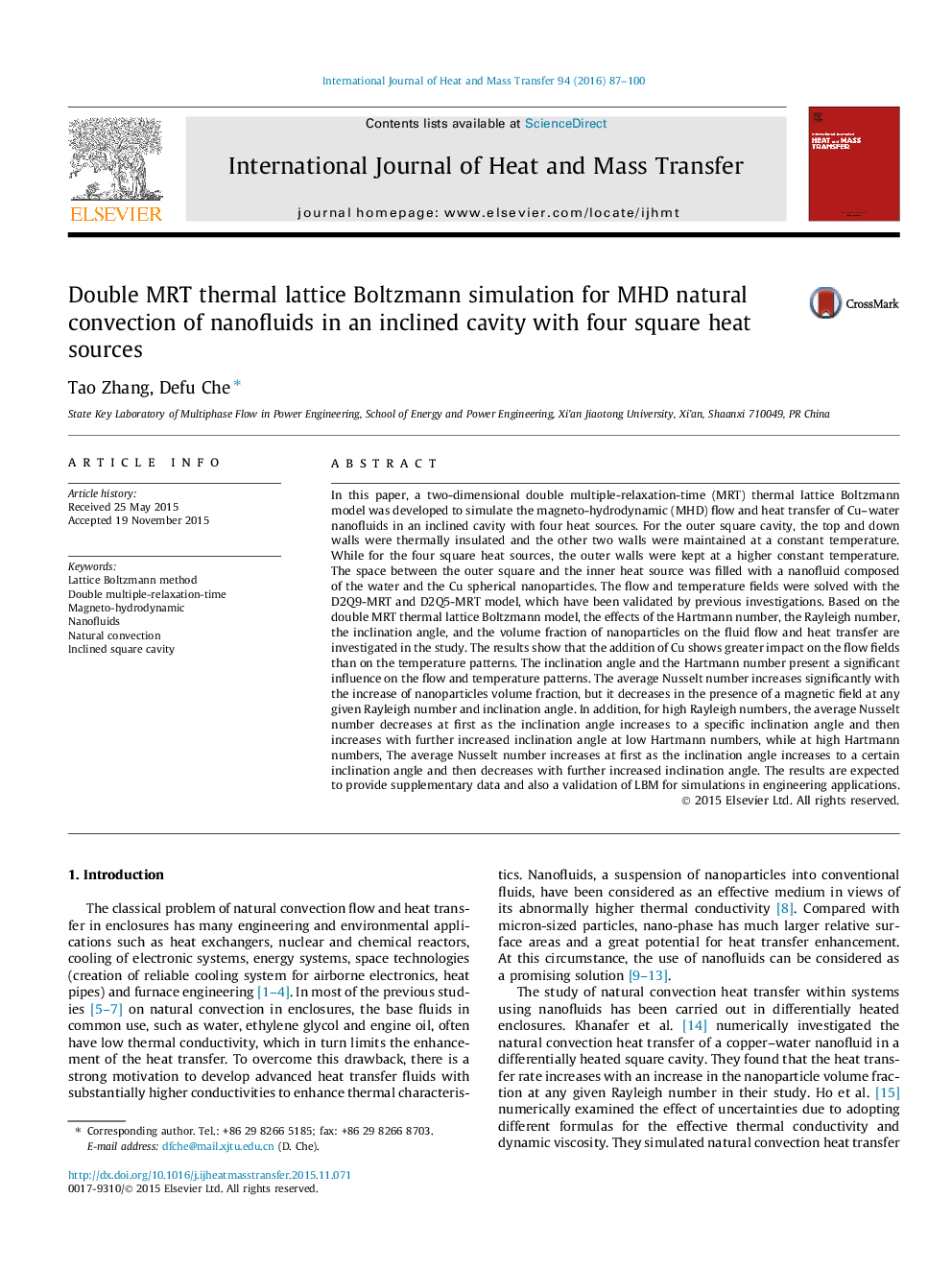| Article ID | Journal | Published Year | Pages | File Type |
|---|---|---|---|---|
| 7055910 | International Journal of Heat and Mass Transfer | 2016 | 14 Pages |
Abstract
In this paper, a two-dimensional double multiple-relaxation-time (MRT) thermal lattice Boltzmann model was developed to simulate the magneto-hydrodynamic (MHD) flow and heat transfer of Cu-water nanofluids in an inclined cavity with four heat sources. For the outer square cavity, the top and down walls were thermally insulated and the other two walls were maintained at a constant temperature. While for the four square heat sources, the outer walls were kept at a higher constant temperature. The space between the outer square and the inner heat source was filled with a nanofluid composed of the water and the Cu spherical nanoparticles. The flow and temperature fields were solved with the D2Q9-MRT and D2Q5-MRT model, which have been validated by previous investigations. Based on the double MRT thermal lattice Boltzmann model, the effects of the Hartmann number, the Rayleigh number, the inclination angle, and the volume fraction of nanoparticles on the fluid flow and heat transfer are investigated in the study. The results show that the addition of Cu shows greater impact on the flow fields than on the temperature patterns. The inclination angle and the Hartmann number present a significant influence on the flow and temperature patterns. The average Nusselt number increases significantly with the increase of nanoparticles volume fraction, but it decreases in the presence of a magnetic field at any given Rayleigh number and inclination angle. In addition, for high Rayleigh numbers, the average Nusselt number decreases at first as the inclination angle increases to a specific inclination angle and then increases with further increased inclination angle at low Hartmann numbers, while at high Hartmann numbers, The average Nusselt number increases at first as the inclination angle increases to a certain inclination angle and then decreases with further increased inclination angle. The results are expected to provide supplementary data and also a validation of LBM for simulations in engineering applications.
Related Topics
Physical Sciences and Engineering
Chemical Engineering
Fluid Flow and Transfer Processes
Authors
Tao Zhang, Defu Che,
